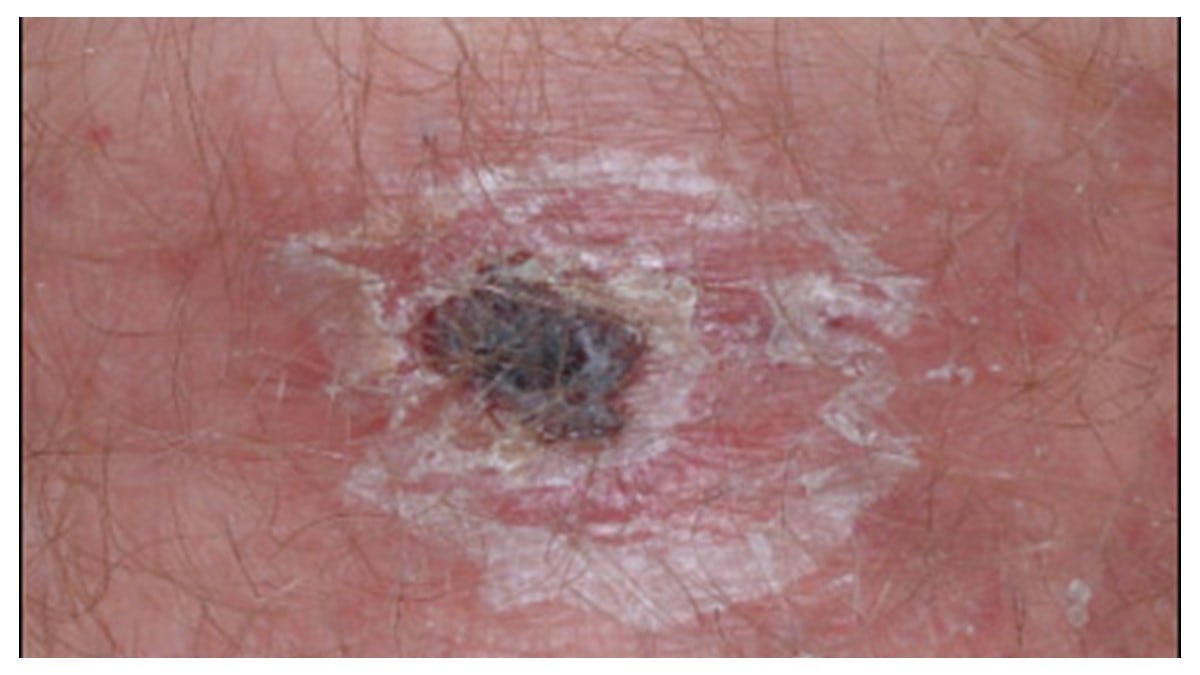Key points
- Spotted fevers can range from relatively mild infections to fatal disease.
- Infections caused by spotted fever group bacteria are characteristically less severe than RMSF.
- Hospitalizations occur less frequently from these spotted fevers. No confirmed fatal cases have been reported, while some patients may resolve without treatment.
- Acute febrile illnesses often accompanied by headache, myalgia, and rash, are also likely to have ulcerated, necrotic regions at the site of tick or mite attachment.

Information for healthcare providers
Spotted fever group Rickettsia (SFGR) species are a group of genetically similar intracellular bacteria transmitted to people through the bite of infected mites and ticks. Infections with SFGR species can range from asymptomatic to serious and even fatal when left untreated.
Rocky Mountain spotted fever (RMSF) is the most serious and commonly reported spotted fever group rickettsiosis in the United States and is caused by Rickettsia rickettsii.
Other causes of spotted fevers in the United States include:
- Rickettsia parkeri rickettsiosis, caused by R. parkeri
- Pacific Coast tick fever, caused by Rickettsia rickettsii subspecies californica (previously referred to as Rickettsia species 364D)
- Rickettsialpox, caused by Rickettsia akari*
*Although no longer considered a spotted fever group Rickettsia, R. akari is closely related and will be included in this summary of spotted fever rickettsioses.
Comparison with Rocky Mountain spotted fever
It can be difficult to distinguish between RMSF and other spotted fevers, especially during early stages of illness. Spotted fevers (including RMSF) share many symptoms such as fever, headache, and rash. RMSF is rapidly progressing and requires treatment within the first 5 days of illness to prevent severe illness and death. Rapidly progressing illness and absence of an eschar should prompt suspicion of RMSF and empiric treatment with doxycycline should be initiated.
Signs and symptoms
Rickettsia parkeri rickettsiosis
Patients with R. parkeri rickettsiosis typically develop an eschar, followed by a fever, muscle pain, headache, and rash. Rash is often described as maculopapular or vesicular eruptions on the trunk and extremities.
Regional lymphadenopathy is detected in about 25% of patients. Gastrointestinal symptoms are rare.
Patients often develop mildly elevated levels of hepatic transaminases, mild leukopenia, and less frequently mild thrombocytopenia.

Pacific Coast tick fever
Patients with Pacific Coast tick fever usually develop an eschar, followed by fever, regional lymphadenopathy, headache, myalgia, and fatigue. Rash is a less common than with the other spotted fevers.
Rickettsialpox
Patients with rickettsialpox characteristically develop an eschar at the site of the bite of a R. akari-infected mite, followed by fever, headache, and rash.
The rash appears as sparse, erythematous, papulovesicular eruptions involving the trunk, face, and extremities. Lymphadenopathy may be present, and mild and transient leukopenia, thrombocytopenia, and elevated levels of hepatic transaminases may occur.
Although rare, moderately severe cases of rickettsialpox have been reported and may involve symptoms of the central nervous system such as stiff neck and photophobia.
